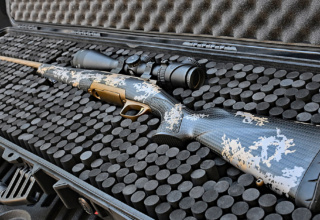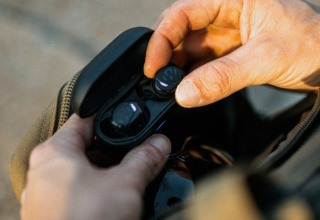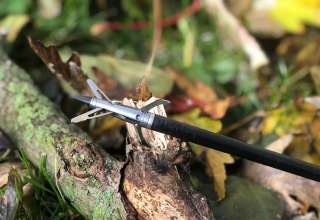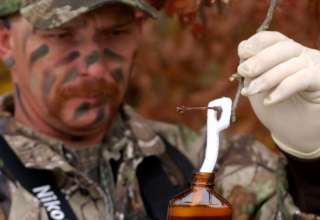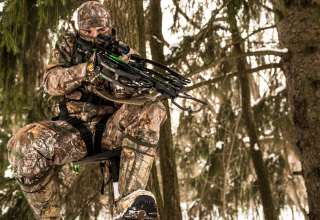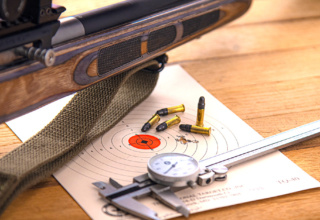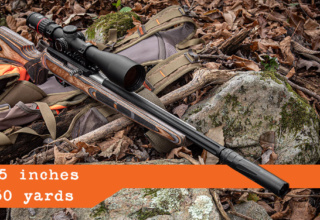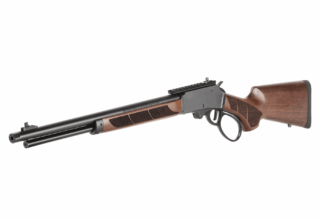After high school graduation I kept a roof over my head calling and trapping predators for the raw-fur market. Those hard-knock lessons taught me enough to become a winning force in regional predator-calling contests. Fur prices fluctuate wildly, but I’ve never lost my predator- calling obsession. During nearly 40 years as a predator-calling junkie I employed bolt-action rifles nearly exclusively. That changed recently after discovering AR-style rifles.
In AR’s I discovered predator-calling weapons that are superior in almost every way. It may not be popular to mention, given the current political climate, but the AR-15 is based on a weapon of war, and when I’m calling predators I consider it war. Predator calling is a matter of hard cash in my pocket, control for livestock ranchers or the benefit of managed wildlife. Wielding AR’s means fewer predators escape alive.
Faster Handling
Predator calling shouldn’t be confused with small-varmint shooting. Coyote calling, in particular, invariably includes dynamic scenarios. Small-varmint shooting—ground squirrels and prairie dogs, for instance—typically include setting up and sniping at your leisure.
 The savvy predator caller attempts to set up according to wind, terrain and vegetation – anticipating exactly where predators will appear. This allows faster response to shooting opportunities with minimal movement. Yet shifty predators have minds of their own… they have a bad habit of arriving from where least expected. Successful predator hunters are highly adaptable and the AR platform gives the freedom to be flexible.
The savvy predator caller attempts to set up according to wind, terrain and vegetation – anticipating exactly where predators will appear. This allows faster response to shooting opportunities with minimal movement. Yet shifty predators have minds of their own… they have a bad habit of arriving from where least expected. Successful predator hunters are highly adaptable and the AR platform gives the freedom to be flexible.
Rock River Arms’ new Fred Eichler Predator2 (16-inch barrel with muzzle break, 7.6 pounds) or LAR-15 Coyote and Coyote Carbine (16- or 20-inch heavy barrels, 7.2 to 8.4 pounds), just to offer a few examples, are just as light as typical bolt rifles but generally more maneuverable. RRA even offers lefty models for southpaws. These and other models accommodate faster reaction to the unexpected.
Faster Follow-Up
Auto-loading AR rifles obviously offer nearly instant follow-up on multiple targets. It’s quite common during later winter months, when food becomes more scarce and larger game must be tackled; and when breeding season arrives, for coyotes to assemble packs. Luring in pairs becomes normal and larger packs are possible. In many cases you’ll take out one of a responding pair with the remaining coyote temporarily confused. The movement and clacking of working a bolt often alerts this survivor, setting them into flight. With an AR you quickly reacquire the second dog and dust them.
Those dynamic situations described above often result in hasty decisions and missed shots. Quicker follow-up, with much less attention-grabbing movement, allows taking advantage of that temporary confusion and correcting errors.
Ultimate Running-Shot Platform
Full-out running shots are par in predator calling, especially in the wide-open spaces of the Great Plains or West. Running shots result while driving in desolate coyote country, or after laying one predator low only to discover another was temporarily disguised by topography or brush. When predator calling, all shots are fair game and AR’s deliver the accuracy needed for the longest pokes.
When shooting bolt rifles, every new shot at running predators means starting over—shoot, bolt, reacquire; shot, bolt, reacquire… with AR’s you never quit aiming, never take your eyes off the target. You concentrate on aiming, swinging and pulling the trigger in one fluid operation while backed by 20- or 30-round magazines. AR’s allow you to walk your shots in, and result in fewer escaped predators.
Accessory Compatible
Those nifty AR Picatinny rails, and often threaded barrels, allow the addition of many useful accessories. Most RRA models include at least three Pic rails. By accessories I’m talking suppressors (so-called silencers), easily threaded to most muzzle-break-equipped models, weapon lights (like GSM Outdoor’s Predator Light) welcomed during nighttime calling/hunting and thermal imaging scopes allowing you to own the night.
I’m preparing for a Texas hog expedition as I write, my hog AR holding all of the above-mentioned products, including TRUGLO TRU-Point Laser/Light Combo and state-of-the-art thermal imaging optics. The scope’s for longer shots, the laser-light added in the event I approach a hog to find it still thrashing and requiring a point-blank finisher.
The .223 Remington/5.56mm most RRA rifles are chambered in make ideal pelt-collecting medicine, the company also offering 204 Ruger uppers for added speed and reach. For hog hunters seeking more punch, look to RRA 6.8mm SPC, .300 Blackout, 7.62x39mm, .308/7.62mm and .458 SOCOM options.
For more information on RRA’s New Predator2 Rifle, please visit https://www.rockriverarms.com
- Gaining an Edge With Sharp Broadheads - November 17, 2017
- Using Scents to Create Higher-Odds Bow Shots - November 7, 2017
- Fundamental Crossbow Maintenance - October 25, 2017



